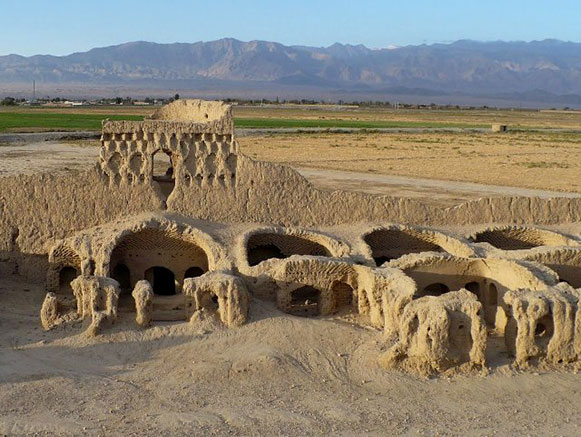TEPE HISSAR (Tappa Ḥeṣar), prehistoric site located just south of Damgan in northeastern Persia. To the north lie valleys rich in flint, lead, wood, fruit, deer, stag, boar, fish and fowl; to the south, the periphery of the great desert (kavir), with known occurrences of copper, gold, turquoise, semi-arid fauna, and herds of gazelles and onagers (Dyson and Tosi, fig. 4). The present mound covers an area of 200 x 300 meters; formerly, it covered about 600 meters (Schmidt, 1937, fig. 16). A Sasanian palace was excavated at 2,200 m to the southwest (Schmidt, 1937, pp. 327-46).
Objects found in 1877 (Schindler) were catalogued around 1925 (Herzfeld, n. 44). In 1931 and 1932, excavations were undertaken by the University of Pennsylvania Museum (Schmidt, 1933, 1937). A surface survey was carried out in 1972 (Bulgarelli, 1972, 1979). In 1976 a re-study project was fielded by the University of Pennsylvania Museum, Turin University, and the Iran Center for Archaeological Research (Dyson and Howard). In 1995 salvage work was done by the Iran Cultural Heritage Organization .
Sixteen hundred graves were recorded; of these 782 from 1932 formed the basis of the 1937 tabular presentation of burial data. Specifically described graves include only 33 for Hissar I, 24 for Hissar II, and 38 for Hissar III (Forest, p. 314). Four rich graves of Hissar IIIC were found in 1931 (Schmidt, 1933: pls. CXLVII, CLII-CLV, pp. 442-52). Some of the skeletal remains have been restudied since Wilhelm Krogman’s 1940 study, using different techniques (Nowell; Rathbun). Generally, bodies were buried on their sides in a flexed position in simple pits. In period II, however, rare brick cist graves appear (Schmidt, 1937, pl. CXI, p. 389). Forest provides a detailed analysis of burial customs.
Based on his analysis of burial ceramics, Erich Schmidt identified three major periods. Period I was subdivided into IA (earliest), IB and IC. The separation between IC and IIA is unclear; the term IC/IIA better reflects this uncertainty. Period II(B) and III(B and C) are well-defined; IIIA is ephemeral. The 1976 radiocarbon determinations support the following chronology: IC/IIA: about 3980-3865 cal. BCE, IIB: c. 3365-3030 cal BCE, IIIB: ca. 2400-2170 cal. BCE; and IIIC 2170-1900 cal. BCE (Voigt and Dyson, I, pp. 173-74). Period IB should then be about 4000 BCE and earlier, while IA should be sometime after 5000 BCE, since it clearly follows the Cheshmi Ali (Čašma ʿAli)-Sialk II painted ware horizon of about 5500 BCE (Esfandiari).

Comment (0)